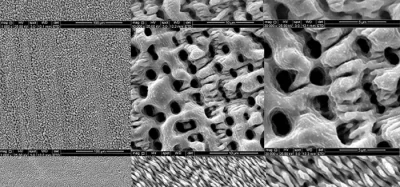New EHEDG Subgroup on Conveyor Systems
- Like
- Digg
- Del
- Tumblr
- VKontakte
- Buffer
- Love This
- Odnoklassniki
- Meneame
- Blogger
- Amazon
- Yahoo Mail
- Gmail
- AOL
- Newsvine
- HackerNews
- Evernote
- MySpace
- Mail.ru
- Viadeo
- Line
- Comments
- Yummly
- SMS
- Viber
- Telegram
- Subscribe
- Skype
- Facebook Messenger
- Kakao
- LiveJournal
- Yammer
- Edgar
- Fintel
- Mix
- Instapaper
- Copy Link
Posted: 3 March 2011 | Jon J. Kold, Regional Chairman EHEDG Denmark and Chairman of the EHEDG, Subgroup Conveyor Systems | No comments yet
A new guideline for the hygienic design of conveyor systems will be based on solid Danish and European experiences with hygienic design of conveyor systems to be used in the food industry. In January 2011, the newest EHEDG Subgroup Conveyor Systems became active at a large kick-off seminar, which took place on 27 January 2011 at Billund Airport Meeting Centre in Denmark. The purpose of the Subgroup is to prepare a new EHEDG Guideline on the hygienic design of conveyor systems to be used in food manufacturing and processing. The subgroup consists of 20 professionals for companies and institutions. This underlines the industry’s broad interest in the subject.
Conveyor systems are widely used in food manufacturing for moving raw materials, processed food and packaged products. The upcoming guideline is primarily aimed at conveyors used in high risk areas, i.e. the processing of non-packaged foods in direct contact with the conveyor or transported in open boxes.
A new guideline for the hygienic design of conveyor systems will be based on solid Danish and European experiences with hygienic design of conveyor systems to be used in the food industry. In January 2011, the newest EHEDG Subgroup Conveyor Systems became active at a large kick-off seminar, which took place on 27 January 2011 at Billund Airport Meeting Centre in Denmark. The purpose of the Subgroup is to prepare a new EHEDG Guideline on the hygienic design of conveyor systems to be used in food manufacturing and processing. The subgroup consists of 20 professionals for companies and institutions. This underlines the industry’s broad interest in the subject. Conveyor systems are widely used in food manufacturing for moving raw materials, processed food and packaged products. The upcoming guideline is primarily aimed at conveyors used in high risk areas, i.e. the processing of non-packaged foods in direct contact with the conveyor or transported in open boxes.
A new guideline for the hygienic design of conveyor systems will be based on solid Danish and European experiences with hygienic design of conveyor systems to be used in the food industry. In January 2011, the newest EHEDG Subgroup Conveyor Systems became active at a large kick-off seminar, which took place on 27 January 2011 at Billund Airport Meeting Centre in Denmark. The purpose of the Subgroup is to prepare a new EHEDG Guideline on the hygienic design of conveyor systems to be used in food manufacturing and processing. The subgroup consists of 20 professionals for companies and institutions. This underlines the industry’s broad interest in the subject.
Conveyor systems are widely used in food manufacturing for moving raw materials, processed food and packaged products. The upcoming guideline is primarily aimed at conveyors used in high risk areas, i.e. the processing of non-packaged foods in direct contact with the conveyor or transported in open boxes.
There are several reasons to reduce the hygiene risk by applying hygienic design to conveyor systems. Firstly, a good hygienic design reduces cleaning time and cleaning costs. Therefore, the upcoming guideline will be relevant in all production environments that require minimal cleaning time. This is especially crucial in productions where high hygienic requirements lead to high cleaning costs. Special care has to be taken if food is transported in a humid environment, which is particularly conducive to the spread of bacteria and thus to the transference of pathogenic or food destructive bacteria to products.
Secondly, the guideline may be used by construction engineers in connection with the conveyor design. It may also be used by purchasing officers when deciding on the specification of parts for conveyor systems.
The guideline may also be used as a communication tool between purchasing companies and suppliers making sure that new conveyors comply with hygienic requirements specification.
Danish initiative
EHEDG Subgroup Conveyor Systems is chaired by EHEDG Denmark who has previously elaborated a guideline for hygienic deign of conveyers for the food industry.
EHEDG Denmark is a rather new EHEDG Regional Section. It was formed in 2008 to strengthen the cooperation between Danish equipment manufacturers, the Danish food industry and EHEDG. A major goal for EHEDG Denmark is to establish a broader knowledge for EHEDG and the EHEDG guidelines in Danish companies. Although the guidelines are well known to some companies, there is a large potential for other companies to benefit from the EHEDG guidelines.
EHEDG Denmark closely collaborates with the industrial network Stålcentrum, which was established in 2003 and now has more than 80 company members representing several industry segments. Being the most important company network in the field of hygienic equipment design in Denmark, Stålcentrum is in a good position to facilitate and support the future development of EHEDG Denmark.
As a matter of fact, the inspiration for the upcoming guideline is a Danish guideline (Guideline 3: Conveyors – with focus on hygiene).
This guideline was prepared by Stålcentrum’s conveyor working group and published in 2007. It offers general advice with regard to the hygienic design of conveyors for the food industry. This guideline, together with other Stålcentrum guidelines, may be downloaded in English from www.staalcentrum.dk/VidenTANK/ industriens_guidelines.htm.
Hygienic design of conveyor systems
Hygienic design of conveyor systems is complex and demanding. Many solutions with regards to function, design, cleanability and service of the equipment should be considered thoroughly.
In the following, this article describes a few of the important considerations the designer should make when designing conveyor systems. The upcoming EHEDG guideline will describe these and many other areas of considerations in far greater detail.
General design
First of all the construction engineer must ensure that the delivered equipment meets the requirements and quality demands that are consistent with the intended use. Reliability and general function is of course just as important in hygienically designed conveyor systems as in all other equipment.
Next, the conveyor must be designed to allow easy cleaning. The equipment must be designed without sharp corners and edges, and the design must be free of cracks, ends, holes, unevenness, rough surfaces etc in areas where cleaning is difficult or impossible. Such areas may harbour bacteria which can continuously contaminate the production. Surfaces must be such as to prevent the development of bacteria film on the machines.
All horizontal surfaces should be reduced to an absolute minimum and designed with a five degree angle inclination to allow water to run off. Constructions/brackets should also be inclined to allow water to run off, which will facilitate drying of the room after cleaning.
Finally, the equipment should be as open as possible. The number of guards should be minimised to what is necessary for reasons of safety and should not prevent efficient cleaning. Guards should be removable during cleaning/disinfection, either through opening or by unhinging.
Different types of belts
The designer should consider the different types of belts available on the market; e.g. modular belts, synthetic belts and synthetic toothed belts, which are all recommended for direct food contact.
Roller conveyors and wire belts may also be used for direct food contact whereas apron belts should not be used for direct food contact due to difficult cleaning around hinges.
Synthetic conveyor belts should have sealed edges to prevent damage to the edges and subsequent disintegration. And of course, all belt types should be approved for use in the food industry.
Lateral guides for belts
Lateral guides can be used to ensure straight running of toothed synthetic belts and modular belts. Lateral guides should not be used for smooth synthetic belts as they will wear the belt. Instead, the belt should be guided by means of camber/crowning on the drum motor/drive motor where it may be combined with a guide profile on the belt.
Lateral guides should be manufactured in one piece – or in as few pieces as possible – meaning a reduced number of joints whereby cleaning is improved. It should be possible to lift the belt during cleaning. Fastening of the guides should be designed to allow removal of the guide during cleaning.
Lateral guides for product
Lateral product guides are mounted on the conveyor to keep the product or box in place on the belt. Lateral guides are mostly mounted on the frame, alternatively on the belt.
As far as possible, the construction should be open/removable, self draining and easy to clean.
Bolt connections of plastics and steel should be avoided as the materials have different expansion properties. For loose products, the belt can be shaped to a u or v-shape profile where products are collected in the middle.
Drive stations
The conveyor belt is moved by drive stations/motors. The choice of motor depends on the belt type and loads in combination with hygienic requirements such as cleaning and risk of pollution.
Drum motors
Make sure that the drum motor is constructed exclusively in stainless steel. When using drum motors, be aware of the motor’s protection grade (IPxx) in connection with cleaning. This grade is crucial to the degree of cleaning the motor can withstand. Make sure that the motor has a minimum protection grade of IP66.
Gear motors
A gear motor is a closed unit with seal rings keeping oil or grease inside the gear. The gear motor surface is normally in aluminium or cast iron.
The surface of the motor house should have a finish that is resistant to aggressive detergents. Furthermore, the motor should be guarded or moved away to avoid direct food contact. Be aware of the heat released from the motor. The guard should be such that it can be cleaned on the inside as well.
Closed gear motors are available in different protection grades (IPxx) to be used in different environments.
CIP cleaning systems
Nozzle beams are used for automatic CIP cleaning of belts. The nozzles can be mounted both outside and between the belts dependent on belt type.
Make sure to select proper nozzles, correct pressure, number and location of nozzles to obtain effective cleaning. An inner nozzle beam must be placed so that impurities are washed out of the belt when it opens on the return roller.
Also make sure that product residue is washed off the inside, underside and screens so that any product residue is removed after cleaning. To prevent the spread of dirt, ensure sufficient screening of the area where the stationary nozzle cleaning is carried out.
Time schedule
The new guideline is intended to be finalised within the next 24 – 30 months. The plan is to have three meeting per year for evaluation of the progress.
New participants welcome If you are an expert in this field and wish to contribute, EHEDG Denmark would highly appreciate your initiative in participating yourself – or nominating an expert from your company.
If you are interested in joining this Subgroup, please contact the chairman, Mr. Jon J. Kold, [email protected], or the EHEDG Secretariat [email protected].
About the Author
Jon J. Kold is educated as chemical engineer from the Technical University in Lyngby, Denmark. John has worked in the food industry for 20 years with quality control and hygiene responsibility. Since 2001, John has worked as consultant for hygienic engineering and testing institute according to EHEDG Certification scheme. From 2008, John has been general manager for the association Stålcentrum who has R&D and knowledge transfer of hygienic design as a key working area.









